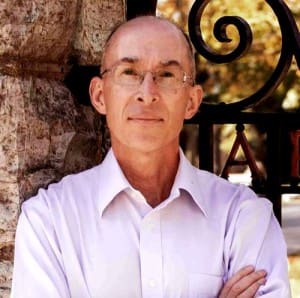 Tell us about yourself and how many books you have written.
Tell us about yourself and how many books you have written.
I spent nearly two decades in Japan and Korea, teaching English, before becoming a full-time writer. My first major work was THE IMJIN WAR (2005, second edition Sept. 2014), a 700-page account of Japan’s sixteenth-century invasion of Korea and attempted conquest of China. After two more East Asia-themed history books, I turned to sports nonfiction with SPEED DUEL: THE INSIDE STORY OF THE LAND SPEED RECORD IN THE SIXTIES (2010), which got starred reviews in both Publishers Weekly and Library Journal, and I JUST RAN: PERCY WILLIAMS, WORLD’S FASTEST HUMAN (2011), named one of the five “Best Sports Books of 2011” by the CBC (Canadian Broadcasting Corporation).
I’ve most recently been writing fiction. My first novel, BAD ELEPHANT FAR STREAM (2013), is the life story of a circus elephant, told through her own eyes. The thriller HOMEOWNER WITH A GUN is his second fiction effort—and almost certainly not his last!
What is the name of your latest book and what inspired it?
It’s a thriller, “Homeowner With a Gun.” It grew from a news item I stumbled across on the web a couple years ago, about a homeowner in New York State who shot and killed two intruders who broke into his trailer in a trailer park. In musing why these guys broke into this guy’s trailer, where there was really nothing to steal, a police officer was quoted as saying something to the effect that “maybe they broke into the wrong house. Happens all the time.” This got me thinking….
Do you have any unusual writing habits?
I find that listening to my “Mind Aerobics” CD before bed helps make me more creative the next day. I don’t use it much, as I think it could be playing with fire. But when I need a jolt of inspiration, something to jump start my creativity, it has helped more times than I can remember.
What authors, or books have influenced you?
Patrick O’Brian (“Master and Commander” series) for historical fiction; Paul Theroux and V.S. Naipaul for good writing; Frederick Forsyth, John Grisham, and Michael Crichton for fast-paced yarns.
What are you working on now?
A alternate history novel, “One Hundred Million Eat Stones,” set in Japan in the closing days of World War Two.It opens on August 6, 1945 with the B-29 Enola Gay crashing on the mission to Hiroshima and the Japanese recovering the atomic bomb.
What is your best method or website when it comes to promoting your books?
I’m still looking for any method I would call effective. Haven’t found one yet.
Do you have any advice for new authors?
Writing is hard. It’s not fun. And it’s lonely. You have to put in many, many long hours, working totally on your own, like a monk in a cell. And you have to sustain that effort for maybe a whole year to get a decent book written. So don’t have any illusions.
What is the best advice you have ever heard?
If you bang your head against the wall long enough, cracks will eventually appear. And then you’ll break through. (Samuel Hawley, 2014)
What are you reading now?
J.G. Ballard’s “Empire of the Sun.” Before that, Ty Seng’s “The Years of Zero,” about the author’s childhood in Cambodia’s killing fields.
What’s next for you as a writer?
Well, I want to complete my next project, the novel “One Hundred Million Eat Stones.” And then I’m thinking of returning to my “roots,” so to speak, with a novel set in Korea and Japan during the Imjin War (1592-98), something along the lines of “Shogun.”
If you were going to be stranded on a desert island and allowed to take 3 or 4 books with you what books would you bring?
Patrick O’Brian’s “Master and Commander”; Paul Theroux’s “Great Railway Bazaar”; V.S. Naipaul’s “A House for Mr. Biswas.” Oh, and The Bible, because on a desert island I’m going to need it.
Author Websites and Profiles
Samuel Hawley Website
Samuel Hawley Amazon Profile
Samuel Hawley’s Social Media Links
Goodreads Profile
Facebook Profile
Twitter Account